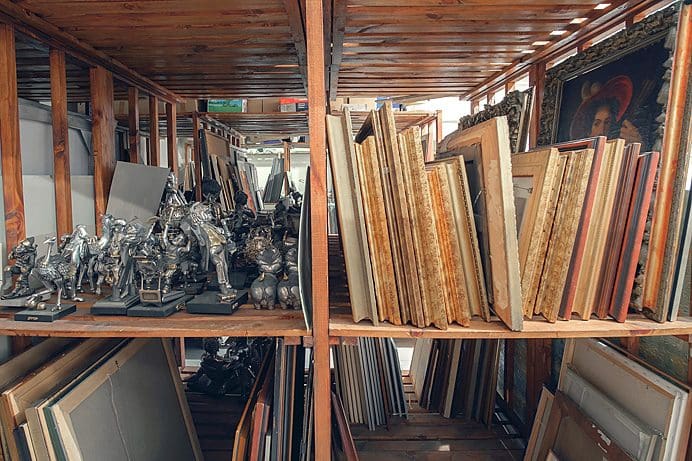words Al Woods
Art collector’s life is always busy. Many of those who are willing to build their own meaningful collections don’t usually see pitfalls at the beginning of such a journey.
At the end of the day, collecting is not only about searching and buying art but also about storing it. You start to understand this when your collection grows, and it becomes challenging to keep it at home.
Creating a dedicated storage room in your home is not a bad idea at all. Instead, it might be a decent and inexpensive option for owners of spacious houses. However, it has its limitations, and, frankly speaking, the storing conditions leave much to be desired. That’s why it is essential and even mandatory for young and emerging art collectors to know how to organize and store an art collection properly so that their valuables won’t get damaged with time.

How to start?
When it comes to storing art, your choice is pretty limited, as there is not a fair number of ways of how you can do it safely. The first and most common decision is home-based storage that can satisfy the requirements of many people, whereas the more state-of-the-art option would be a storage facility specifically designed to create the best possible environment for various types of art. Let’s go through each method and distinguish its pros and cons, which, in the end, will help you make a sober decision.
Home storage
Home-based storage is great, and still, it doesn’t work for everyone. The main issue is space. If your house or apartment doesn’t have enough room, well… it just won’t cut it. Though if it is not a problem, home storage will become a reasonable alternative that you should consider.
Everything that you need for storing art at home is a spare room and some basic knowledge of maintaining the room climate. You have to prevent direct sunlight and heat exposure, factors that adversely influence paintings and can even lead to serious damage in the future. Also, you will need to buy a humidifier, a rather useful device that will balance the room humidity level.
The recommended humidity level is about 45-55%, while the temperature shouldn’t drop to less than 21 and go over 25 degrees Celsius. However, keep in mind that the safety and effectiveness of home storage depend on many aspects, and thus it’s hard to predict any results.
One thing is for sure, home storage is a relatively safe and comparably simple choice that every art collector can afford. On the flip side of the coin, it might well pose a danger to your artworks if you don’t take sufficient care of the storage room and your collection. Besides, it has space limitations, so, at some point, you still may need to store your artworks in a specialized storage facility.
Storage facility
First of all, it is important to understand that there is a clear distinction between self-service storage and full-service storage. Names speak for themselves: self-storage is when you rent a room or unit where you store your items without much fuss, as it is already equipped with everything you need. The only problem is that not every self-storage is safe for storing art, so you should be very careful with your choice. On the other hand, full-service art storage is designed to store fine art and implies a whole set of additional services, such as collection management, art packing, custom crating, and more.
It is needless to say that a specialized art storage facility is a more sophisticated option, as it offers a lot of features as compared to home storage. You will get a modern climate control system, superior safety, and enhanced security, not to mention that you will free up your living space, which is one of the main benefits of using art storage services. You can find more information on the matter at https://fineartshippers.com or check your local art storage facilities for a better understanding of how they work. Specialized art storage services are obviously not free, but if you can afford them, your art collection will be handled the way it deserves.
So what is the best way to organize and store your art collection?
Each method has its advantages and drawbacks, which means that every art collector should decide for themselves. If to be more specific, it would be fair to say that home storage is a good option for emerging art collectors and people with lots of free living space and time. A dedicated art storage facility, in its turn, is the right choice for established art dealers and seasoned collectors who require much space, professional handling, and a reliable security system for their collections. What to choose is up to you.









